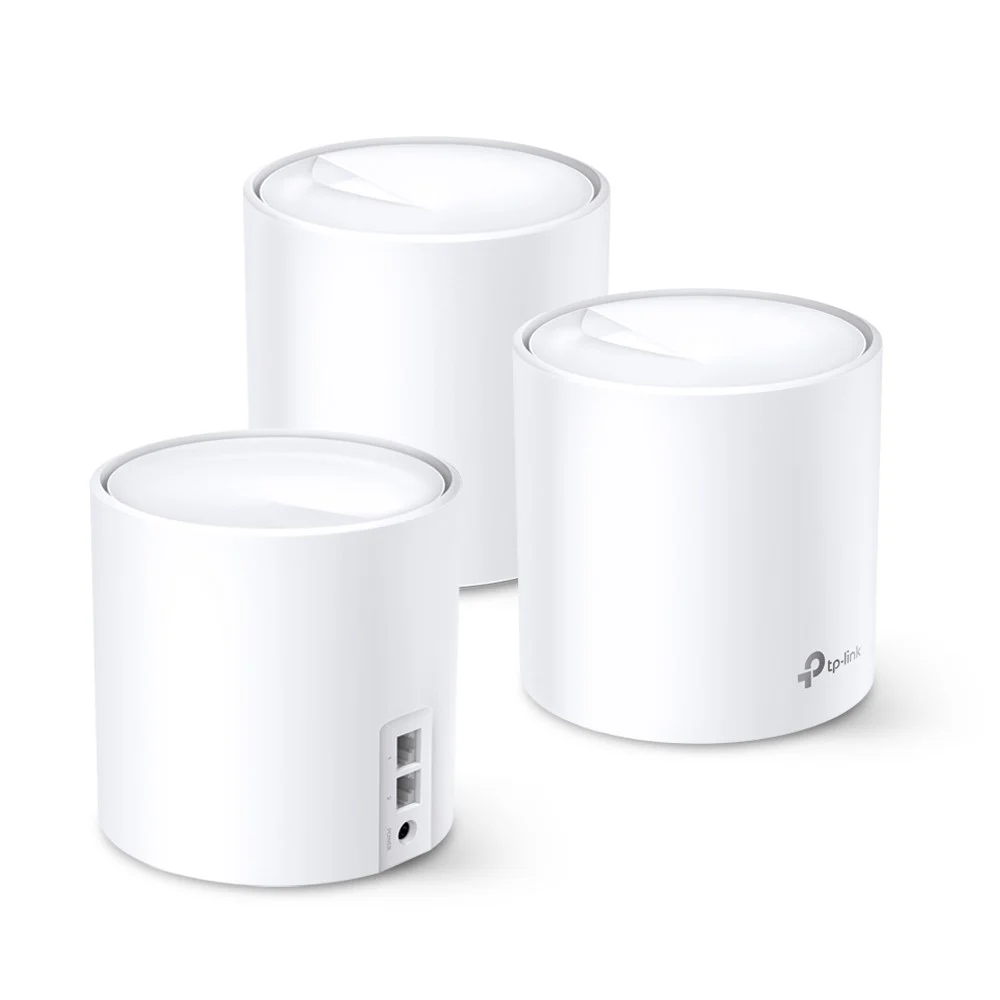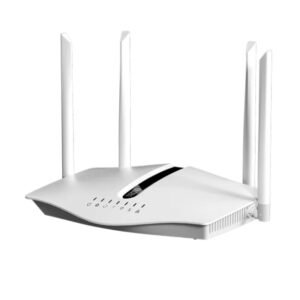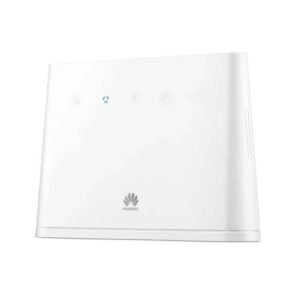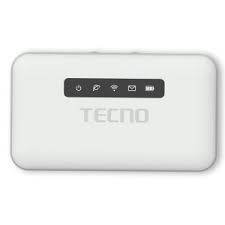Subtotal: KSh 6,800.00
TP-Link Deco X20-AX1800 Superior Mesh Wi-Fi (3 pack)
TP-Link Deco X20-AX1800 Superior Mesh Wi-Fi (3 pack) Features and Price in Kenya.
- Superior Mesh Wi-Fi: Covers your entire home with strong, reliable Wi-Fi.
- AX1800 Wi-Fi: Fast speeds for all your devices.
- 3-Pack: Expand your coverage to large homes or multi-story buildings.
- Easy Setup: Get connected in minutes with the TP-Link Deco app.
- TP-Link HomeShield: Protect your devices from online threats.
KSh 35,000.00
Introduction to Mesh Wi-Fi Technology
In the realm of wireless networking, mesh Wi-Fi technology has emerged as a revolutionary solution to address common connectivity issues faced by users of traditional routers. Unlike conventional systems that rely on a single router to transmit signals, mesh networks consist of multiple interconnected nodes that work collaboratively to provide enhanced coverage throughout a specified area. This design minimizes dead zones and ensures that internet access is consistently strong, regardless of where one is located within a home or office environment.
One of the primary advantages of mesh Wi-Fi technology is its ability to create a seamless connectivity experience. Users can move freely between different rooms without experiencing interruptions or dropped connections, as the system intelligently transitions their devices between nodes. This feature is particularly beneficial for households with multiple devices connected to the network, enabling simultaneous streaming, gaming, and browsing without sacrificing speed or performance.
Setup and management of mesh systems are also user-friendly, often requiring minimal technical expertise. Many providers offer smartphone applications that guide users through the installation process, facilitate network customization, and provide insights into device connectivity. With the increasing reliance on smart home devices, having a robust and adaptable network has become essential to maintain functionality and support various applications. Furthermore, the scalability of mesh systems allows users to expand their networks easily by simply adding more nodes as needed.
As demand for reliable and widespread internet access continues to grow, many users are turning to mesh Wi-Fi solutions, such as the TP-Link Deco X20-AX1800. By offering improved coverage and seamless connectivity, mesh networks represent a modern approach to networking that caters to the dynamic needs of today’s digital lifestyle.
Overview of the TP-Link Deco X20-AX1800
The TP-Link Deco X20-AX1800 represents a significant advancement in home networking, harnessing the power of Wi-Fi 6 technology to deliver enhanced performance and connectivity. This mesh Wi-Fi system is designed to provide seamless internet coverage throughout your home, ensuring that every corner receives strong and reliable Wi-Fi signal even in environments with multiple connected devices.
Equipped with a dual-band setup, the Deco X20 offers concurrent speeds of up to 1800 Mbps, facilitating smooth online experiences whether you are streaming high-definition videos, gaming, or video conferencing. The AX1800 speed is a crucial feature that underscores the device’s capability to handle several devices simultaneously without compromising performance. This is particularly beneficial for modern smart homes where numerous gadgets—from smart TVs to security cameras—are constantly connected to the internet.
In terms of coverage, the Deco X20 is engineered to cover areas up to 4,000 square feet with just two units, eliminating dead zones and ensuring a strong signal throughout your living space. The mesh technology ensures that connected devices can switch seamlessly from one unit to another as you move around your home, maintaining a stable connection at all times. Additionally, the device supports TP-Link’s Smart Connect and Band Steering features, optimizing network performance by automatically steering devices towards the best frequency band available.
Further enhancing user experience, the Deco X20 is paired with an intuitive app that simplifies setup and management of your home network. With advanced security features, including WPA3 encryption and built-in antivirus protection, the TP-Link Deco X20-AX1800 not only excels in performance but also prioritizes safety in an increasingly connected world. This makes it a compelling choice for those looking to improve their home networking experience, particularly in an environment heavy with connected devices.
Performance and Reliability
The TP-Link Deco X20-AX1800 presents a remarkable performance in the realm of mesh Wi-Fi solutions, providing consistent and reliable connectivity across various environments. In real-world use cases, users have reported impressive speed results, often reaching speeds up to 1800 Mbps, depending on network layout and distance from the primary unit. The Deco X20 utilizes Wi-Fi 6 technology, enhancing data transfer speed and increasing capacity, allowing for seamless streaming, gaming, and remote work simultaneously without noticeable lag.
Range coverage is another significant advantage of the Deco X20, which boasts a coverage area of up to 4,000 square feet. This expanded range is crucial for larger homes or offices where traditional routers may struggle. With multiple units that collaboratively distribute Wi-Fi signals, users can experience reliable connectivity even in the most remote corners of their space. The intelligent mesh technology ensures that devices automatically connect to the nearest unit, optimizing the overall user experience by providing stable, high-speed internet.
The ability to handle multiple devices is central to the Deco X20’s performance reliability. Featuring advanced QoS (Quality of Service) settings, this system prioritizes bandwidth for critical devices, ensuring that high-demand applications are consistently performed effectively. Moreover, its capacity to connect over 150 devices simultaneously without compromising speed is noteworthy, appealing, particularly to households with numerous smart devices.
In terms of reliability features, the Deco X20-AX1800 includes automatic firmware updates which are vital for maintaining security and performance over time. Coupled with robust security protocols like WPA3 encryption and built-in antivirus protection, users are assured a stable connection free from external threats. All these factors contribute to the overall performance and reliability that make the TP-Link Deco X20-AX1800 an excellent choice for diverse networking needs.
Installation and User Experience
Setting up the TP-Link Deco X20-AX1800 is designed to be a hassle-free experience, primarily facilitated by the TP-Link Deco app. The initial installation process begins by downloading the app, available for both Android and iOS devices. Once installed, users are prompted to create an account or log in, followed by a straightforward series of steps to connect the decos to the home router. Users should power on the first Deco unit and follow the app’s instructions to ensure a smooth connection to the internet.
After connecting the first unit, the app guides users through the addition of additional units, making it easy to achieve optimal coverage throughout their home. The app provides a visual guide for placing the Decos, suggesting specific locations to eliminate dead zones effectively. This intuitive setup process allows even those with minimal technical expertise to establish their mesh network quickly.
Throughout the installation, users might encounter various issues such as connectivity problems or app crashes. TP-Link provides a comprehensive troubleshooting guide within the app, addressing common issues. This can include resetting the devices, checking the connection status, or ensuring the latest firmware updates are installed. The robust support ensures that users can confidently resolve any setup-related concerns efficiently.
Beyond installation, the user experience with the Deco X20-AX1800 continues to impress. The app enables customization of the network settings, including the management of parental controls and guest network features. With the parental control functionality, users can limit internet access for specific devices and set time limits to encourage a positive digital environment for children. Additionally, the guest network feature permits visitors to access the Wi-Fi without compromising the security of the main network. These user-friendly features significantly enhance the overall experience, making it easy to manage network settings while ensuring security and convenience.
Comparing the TP-Link Deco X20-AX1800 with Other Mesh Systems
The TP-Link Deco X20-AX1800 has gained significant attention in the realm of mesh Wi-Fi systems, yet it stands alongside various notable competitors, such as the Netgear Orbi RBK50 and the Google Nest Wifi. Each of these systems boasts unique capabilities that cater to different user requirements, making it essential to draw a comparative analysis to highlight their respective strengths and weaknesses.
In terms of pricing, the Deco X20-AX1800 is positioned competitively. It typically retails at a lower price point compared to the Netgear Orbi RBK50, which is on the higher end of the spectrum. This price differentiation makes the Deco X20 an appealing option for users seeking a budget-friendly yet robust mesh solution without compromising on quality. Features such as Wi-Fi 6 support found in the Deco model offer improved performance and efficiency, particularly in environments with multiple connected devices, setting it apart from older models.
Performance metrics reveal that the TP-Link Deco X20-AX1800 often excels in delivering consistent speeds across larger areas, thanks to its advanced dual-band technology. User reviews frequently highlight its straightforward setup process, which can be advantageous for less tech-savvy individuals. In contrast, while the Netgear Orbi is praised for its faster speeds, some users report that it can be more challenging to configure, which may not suit everyone’s preferences. Additionally, the Google Nest Wifi is renowned for its sleek design and smart home integration but tends to lag in speed when facing numerous devices simultaneously.
Overall, customer satisfaction is a crucial element in evaluating these systems. The TP-Link Deco X20-AX1800 generally receives favorable feedback, particularly with respect to its performance and value for money, making it a strong contender in the competitive mesh Wi-Fi market. Users often appreciate the combination of features, ease of use, and affordability, solidifying its reputation as a reliable option for both home and small office setups.

 Alcatel 1
Alcatel 1 





There are no reviews yet.